Restaurants are under more pressure than ever to increase their internet presence for a variety of reasons.
Whether it be as a result of pandemic-related disruptions, heightened competition, or shifting perceptions about the value of having a strong online presence, whatever the reason, a restaurant business knows they need up their online game.
Right now, increasing local search online is crucial for online ordering as well as in-person dining.
For increasing visitors, there are numerous possibilities for paid advertisements, partner services, and referrals. However, ranking highly in Google's organic search results are efficient, frequently less expensive ways of attracting the most relevant and direct visitors, which may then be converted into consumers.
In this article, you'll find 4 restaurant SEO ideas to help you increase your exposure, traffic, and customers.
But first, let's take a look at the key to SEO and your business's success, why you need an SEO strategy to up your restaurant's presence, get more customers, and more.
Restaurant SEO: the key to your restaurant's success online
Apart from the fact that the internet has given the world social media, e-commerce, and many other convenient online services, it is also the largest source of information in the world. Time and time again, we pull out smartphones and access the internet to get information about basically anything and everything. According to Hristina from SEO Tribunal, as much as 93% of online experiences start on a search engine.
This stat is particularly important for restaurant owners, who in the past had to rely heavily on paid forms of marketing - both online and offline. The recent increase in the use of search engines helps fuel the discovery of businesses online and opens up new avenues for restaurants in the form of search engine optimization - the process of making your website more visible online.
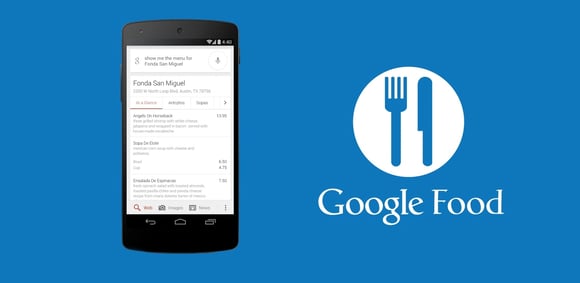
Search engines facilitate this search for information. Every second, over 2.2 million queries are conducted on Google alone. Other search engines, such as Baidu and Bing, also attract a lot of queries. According to a recent study, the first five search engine results account for 67% of all clicks on the internet.
Appearing on the first page of any search engine can be the difference between a thriving restaurant website/business and a poor one. There is even a running joke that if you need to hide a dead body, the place to do it is on the second page of Google search results.
So, if you want to reach the first page, the best way to do it is by sticking to the process known as Search Engine Optimization (SEO), which is crucial for helping potential customers discover your restaurant online.
What is search engine optimization?
Search engine optimization is a process that aims to affect the online ranking and visibility of a site in a search engine’s natural results. The higher the rank of a site in search rankings, the higher the number of visitors that can then be converted into customers. SEO targets top rankings in all forms of online queries, including image, news, and academic search.
For restaurant owners, this means having your restaurant website or blog post show up on the first page of a web search for keywords related to your business.
Why is search engine optimization important for restaurants?
As we already mentioned, the ultimate goal of SEO is to tweak your restaurant website so that it ends up ranking high in searches related to your site’s niche. For example, if your restaurant serves Italian cuisine, you’d want it to show up among the top results when users enter keywords such as “Italian restaurants near me” or “best Italian restaurants” into a search engine.
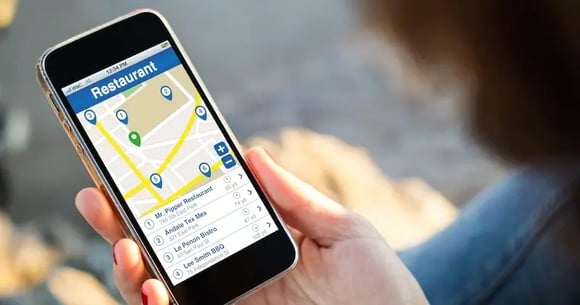
64% of searchers convert to 'customers' within the first hour
An impressive finding shows that 65% of smartphone users search for restaurants online with the intent of finding a spot to eat within driving and walking distance. Even more impressive, of those people, 85% actually go on to ‘convert’ - either by showing up to the restaurant as a walk-in, calling the restaurant, and even booking a table online - which becomes easier when placing your online booking widget into your Google my Business profile.
The stats above are only looking at online searches conducted on mobile phones, and with 3.4 billion searches made daily on Google alone, a huge portion of these searches are also coming from computers at home and work when people are looking for somewhere to head to for lunch or dinner.
SEO boils down to improving and increasing your restaurant’s site authority and relevance. The relevance of a restaurant website means that it is an appropriate result of a query. This can be positively affected by carefully creating content and wisely selecting keywords to attract local customers.
Site authority, on the other hand, means that your restaurant website is trustworthy. This can be increased with high-quality content, inbound and editorial links, brand mentions, and essential UI metrics.
Do you want to know more about what you need to do to optimize your restaurant website for search engines? This infographic is perfect for you as it provides stats, tips, and facts to help you understand and take advantage of the numerous benefits of SEO.
SEO Benefits for Restaurant Owners
Key benefits of SEO for restaurants include, but are not limited to:
-
Increasing online traffic to your eatery
-
Increasing online bookings and orders
-
Increasing your web visibility and brand recognition
-
A rise in customer engagement
-
Increasing local SEO for your website
Now, let's go back to the best Search Engine Optimisation practices for restaurants to help increase website visitors:
1. Make sure to register your restaurant website with 'Google My Business'
Businesses can build a profile or listing on Google My Business for free, making it easier for customers to find and access important information. Optimizing your Google Business Profile is crucial for enhancing local search visibility, especially for restaurants.
When you create a business profile for your restaurant, the following text will appear in the locations indicated below:
On the Google search results page, in the upper right corner:
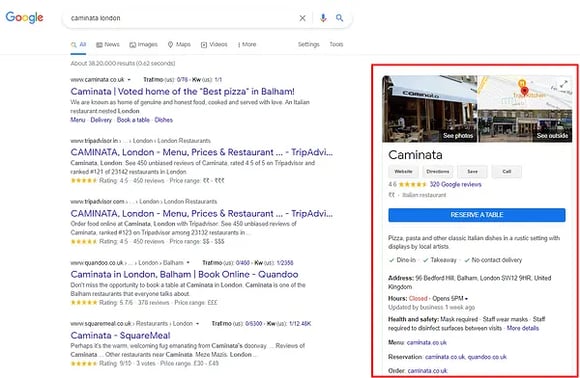
Google Maps: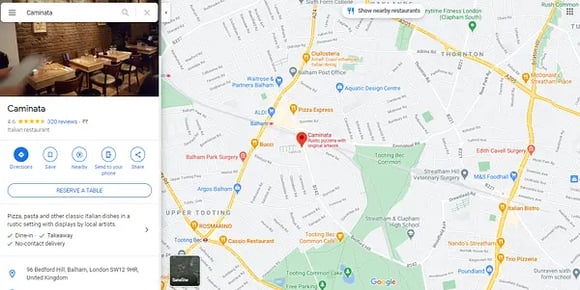
Google's Local Pack (the first three company listings that show up when people search for terms connected to your restaurant):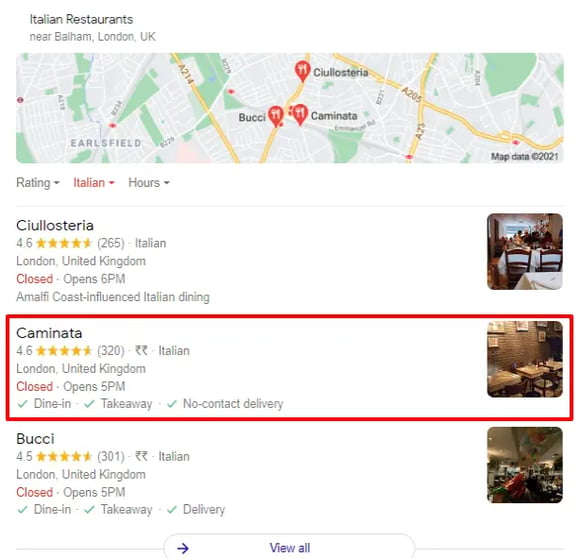
Now, let’s move on to how you can begin to set up your profile.
1. Start by clicking “Start today” at google.com/business.
2. Type the name and address of your company. By proving your ownership, you can claim an entry if your company is already on the list.
3. Select the appropriate commercial category. “Restaurant,” “Cafe,” and “Food & Drink” are a few pertinent categories for eateries.
4. Type in your contact details. Important details like your address, restaurant’s website, phone number, UpMenu online ordering link, and business hours should be included in this. This is important for local search.
5. Insert images. Customers adore food images, so be sure to include some of your menu items in them. Additionally, Google Search and Google Maps depend on it.
6. Make your listing public. Once you’ve completed the necessary fields and uploaded any necessary images, click “Publish” to make your company listing live.
>>>> Want to know more? Download our complete guide on Guest Acquisition here.
2. Implement Schema markup for your restaurant
Restaurants can mark up their information using restaurant schema and structured data markup so that search engines can interpret the information that is offered to them on a page. The most fundamental information is the restaurant's name and address, followed by your whole menu and reservation options.
Not all of these requirements must be followed by restaurant websites due to the additional information that a Google Business Page for a restaurant allows. However, we still advise marking up as much as you can if you have the technical skills.
>>>> Learn how to get more restaurant reservations with Google in 2023.
How to get started with schema markup for your “restaurant”
You can create and deploy schema on your restaurant website using a number of internet tools. The contact details, business hours, accepted payment methods, menu URL, and cuisine of your restaurant, for instance, can all be entered into a structured data generator to get a code.
However, we advise using Google's Structured Data Markup Helper for the best outcomes. Then, from how to produce the code to where to include the schema markup on your website, we'll walk you through every step of using it below.
Enter the URL or HTML source of the page you wish to mark up, then choose "Restaurants" from the list of data types.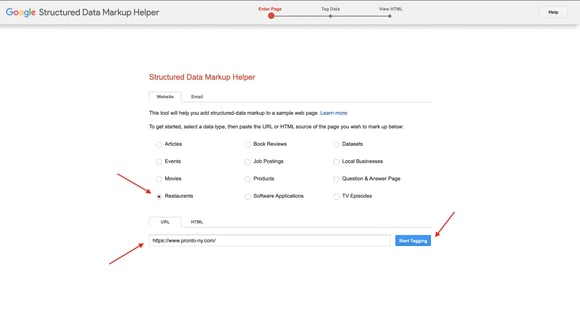
After that, select the content you wish to mark up and make your selection from the list. Choose, for instance, the name of your restaurant and tag it with "Name."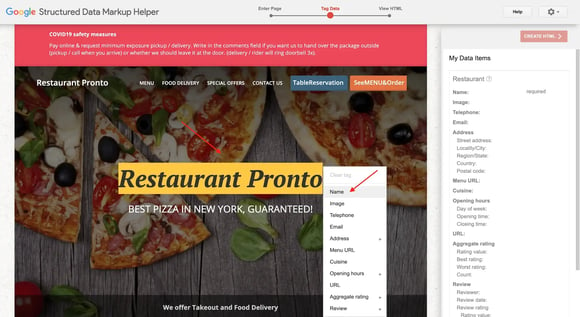
Click "Add missing tags" at the bottom of the page to manually add any information that is missing from the page.
After inserting all the necessary tags, select "Create HTML" to have the program produce a code that you can subsequently paste into your website.
You have the option of viewing the code as microdata or JSON-LD.
The actual data you've entered will be highlighted in yellow in the code and on the side for the microdata option, letting you know where to look for it. The next step is to access your source code or content management system and paste the code in the locations shown in yellow. Once more, you have the option of downloading the code as an HTML file.
We advise checking the code of your website using the Structured Data Testing Tool preview option before making any changes. It will display an image of your page as it would appear in Google search results.
Add menu schema
Due to all the possibilities, the schema.org menu markup is the most complicated. You can include different serving hours, separate sections (appetizers, soups, and salads), and different menus (breakfast, lunch, and dinner).
For more information, visit the official Schema page for Restaurants and Menus today.
3. Optimize your restaurant website
There are literally hundreds of methods that people use to raise the ranking of their restaurant's site in search results, all of which are based on a scoring system that Google keeps confidential. Nobody can definitively say what actually occupies the top slot.
Having said that, Google has provided a fairly accurate notion of the formula.
In this section, we deconstruct the fundamental tactics and suggestions that SEO professionals employ to optimize websites. Here are the top restaurant pieces of advice:
Create a mobile-friendly website
As previously mentioned, the majority of visits to restaurant websites come from a mobile device, especially for local businesses. Google increasingly concentrates on a website’s mobile version to interpret its content.
Ideally, you’ve already built a responsive website or one that satisfies the necessary mobile-friendliness requirements.
But in terms of mobile, that’s only the start.
Additionally, it’s crucial to consider page load time, proper rendering, and a fantastic mobile user experience.
Consider link-building for your restaurant
Link building is convincing other websites to add yours as a resource when discussing exquisite meals, the greatest restaurants in town, or where to find the most talented chefs.
Your business benefits from having as many backlinks as you can from reputable websites from two separate angles. First off, it's fantastic for SEO (search engine optimization). Links indicate to search engines that your information is relevant and of high quality. Backlinks demonstrate to people that you may acquire good recommendations for your restaurant. Links distributed throughout the appropriate locations increase the likelihood that potential customers will find you. They are more likely to visit you if these hyperlinks are on websites they trust.
Plan your keywords using a roadmap
Building out a restaurant SEO roadmap using keyword research should be the first thing a restaurant actions.
But, what exactly is keyword planning?
The target search terms you want the website for your restaurant to rank for are laid out in a keyword plan. The tastiest chicken wings in Houston, for example, might be only one word (i.e. "wings"), but it's more likely that they'll contain two, three, or more words.
The next step is to use a free keyword planning tool to assist you to come up with more keywords that are related to the ones you've already listed. Based on how many individuals (on average) search for that term each month, this tool might help you prioritize some terms over others.
The following tools for keyword research are either free or have free trials available:
Understand the correct use of keywords
You should categorize your targets into three different types of terms while conducting keyword research. Broad restaurant terms with high intent, specific specialist keywords, and branded relevant keywords.
-
High intent keywords: Keywords with high intent but low competition include phrases like "restaurants in New York," "top New York supper spot," etc.
-
Niche keywords: Niche keywords are those that are particular to what your restaurant has to offer. Consider phrases like "pizza parties New York," "pizza bargains on game days," etc.
-
Branded keywords: This entails optimizing your restaurant's name and associated keywords. It's pretty uncommon for restaurants to have Yelp show up in the first few results when a search is done for their name.
List the keywords you believe will have the biggest influence on getting your restaurant to show up in search results, then use the keyword planning tool to check that people are actually using these keywords.
Next, compile a list of prospective diners at your establishment. This will enable you to pinpoint their individual problems and seek keywords that are relevant to this group.
Include page title tags and meta descriptions
The Meta tag is hidden in your code, so your website doesn't see it. Search engines and other bots use the Meta tag. Your page's description, page title, and keywords are all included in the meta tags.
The most crucial keywords for each of your pages are identified via the Meta keyword tag. Your website's brief description appears in search results thanks to the Meta description tag. Meta description tags should ideally be between 150 and 160 characters long. Avoid using identical descriptions.
The distinct title you give each page of your restaurant website appears in the Meta title tag. Avoid using titles twice. To ensure that at least 95% of your titles display correctly, keep your titles to around 55 characters. Use effective keyword words in your page title or a call to action, advises SEO guru, to improve the optimization of your website.
Utilize fundamental on-page SEO best practices
On-page SEO is the process of optimizing your website's pages for search engines.
This involves ensuring that your goal keywords are present in crucial areas of your website, fixing any crawl issues with the bots that search engines send out, and ensuring that your website appears in the search results in a way that will draw visitors.
Even though there are a lot more aspects to on-page SEO, focusing on these crucial elements will increase your website traffic, online visibility, and, ultimately, your bottom line.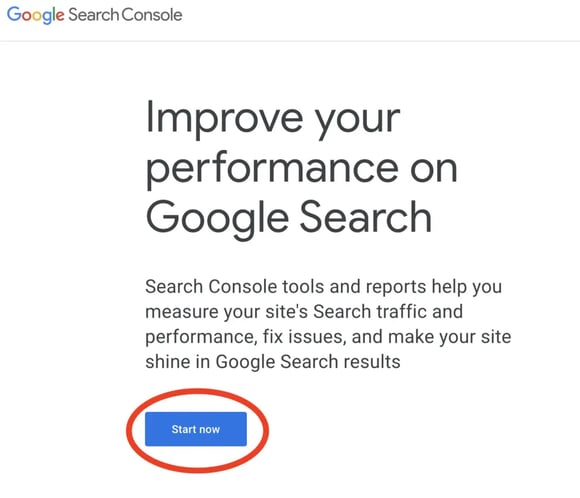
The first thing you should do to improve your on-page SEO is to install Google Search Console. With the help of this free Google tool, website owners can monitor indexing issues on their sites and make sure the Google search bots are finding all the important content there. To start, make sure you're logged into the Google account you wish to use for your business (the one you used for Google My Business is your best bet).
Start by heading over to Google Search Console, then click "Start Now". Then, in order to set up your website, Google will then guide you through a number of stages. Once everything is configured, you will have access to a dashboard that provides you with a wealth of information about your website, including crawl issues that need to be fixed as soon as possible.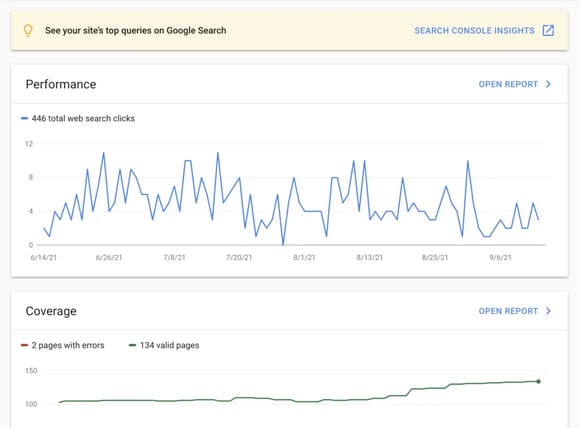
The next step is to set up your website so that it can be effectively crawled. You may accomplish this by making a sitemap, submitting it through Google Search Console, generating a robots.txt file, and making sure your website has links to and from all the sites you want to be searched.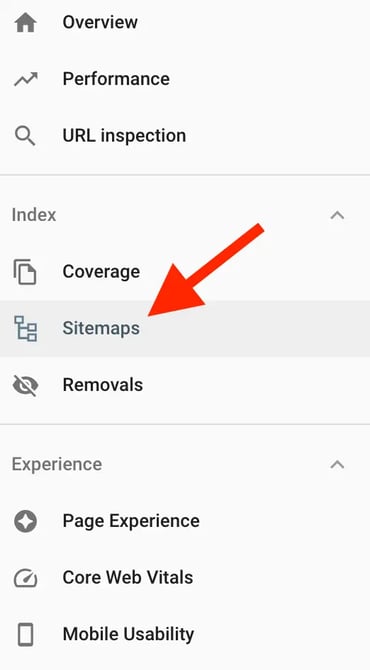
Finally, by strategically distributing your target keywords throughout your website, you will improve your on-page SEO.
Your website's pages should all have unique URLs that contain your keywords. Additionally, you should include your keywords in the headings and body language of each page as well as in the title and meta description tags.
Set up and create original content
When you only have one restaurant, you have a lot less work to do than a local or national chain with several locations.
However, you need to differentiate yourself from the competition by making sure your website has a sufficient amount of original material. Including a text-based online menu can significantly enhance your search rankings and accessibility, as guests often search for a menu before reserving.
If your website’s content is important to your visitors, having a ton of it will benefit you. Better rankings, a higher brand recall, and greater brand affiliation are all benefits of developing a powerful brand.
Remember that content doesn’t always have to be written material; you may also utilize video, photography, and graphics to present your menus, internal promotions, and more.
The context of your site, not just its keywords, is what the search engines are concentrating on. You can keep the pipeline full of interesting information that makes you stand out from the competition by finding and creating fresh content on a regular basis.
For instance, embrace your restaurant’s unique market and distinguish yourself from the nearby generic chain by doing so.
Inform people about the company’s founders, culture, and most crucially, its product. Give specifics about your menu, such as where you got your ingredients, how you came up with your dishes, and why your chicken curry is the best in town.
4. Become the leader in local SEO
Your top objective should be to appear in local SEO results. To offer your restaurant the best opportunity, follow these steps:
Improve your restaurant's local SEO
Start by claiming, standardizing data, and optimizing listings for your restaurant across all significant and pertinent local search properties before diving into local search.
This consists of a combination of social media platforms, online directories for certain industries, and search engine directories.
When you know what directories and outside data sources are available, you can make sure they are updated by using tools like Moz Local and Yext.
A crucial core component of regional SEO is having accurate NAP (name, address, phone) data that is consistent across all data sources.
After that, you may focus on aligning information sections like the business description and business categories with the focus terms you found throughout your keyword research.
Concentrate on the important directories. Start with Google My Business before expanding to Yelp, TripAdvisor, Foursquare, CitySearch, other Yellow Pages, and other newly developing niche review websites.
Your web presence will increase as a result of everything said.
Explore listings in directories and search engines
The easiest and most crucial step in beginning your restaurant SEO is likely to be directory and search engine listings. Businesses can join the listing network of search engines like Yahoo, Google, and Bing by supplying thorough and reliable information about their establishments. The smaller directories gather their data from the larger ones, and all the internet directories are integrated like an ecosystem. As a result, make sure your information is current in a larger directory, such as the Yellow Pages, and keep an eye on the smaller ones to see if any updates have been made. Once more, this is a reliable source of regional SEO for eateries.
Eliminate Double Listings
There can be a few duplicate listings under the name of your restaurant. To add authenticity to the internet reputation of your business, it is crucial to remove the false entries. By registering and claiming your establishment, you can get rid of them. This would benefit your restaurant's general SEO as well as its search engine rating.
Create a listing for your restaurant on review sites and encourage reviews
According to studies, search results with reviews had higher CTRs (a click through rate) to those pages. More traffic equals more prospective consumers, to reiterate.
When ranking local search results, Google takes online reviews into consideration as well. Google displays the top-rated establishments in many local search results. Google may even display the review of your restaurant on the search results page, which may aid in drawing in additional guests.
Therefore, it's important to encourage online reviews from customers to help improve your SEO efforts and online search results.
5. Technical SEO for restaurants
Technical SEO is a crucial aspect of restaurant SEO that focuses on optimizing a website’s technical aspects to improve its search engine rankings. This includes optimizing website speed, using alt text and descriptive text for images, and ensuring that the website is mobile-friendly.
Understanding technical SEO and its importance
Technical SEO is essential for restaurants because it helps search engines like Google understand the structure and content of their website. This, in turn, improves the website’s visibility and search engine rankings. By ensuring that your website is technically sound, you not only make it easier for search engines to crawl and index your site but also enhance the user experience, which is a key factor in search engine rankings.
Optimizing website speed and performance
Website speed is a critical factor in search engine rankings. A slow website can lead to a poor user experience, which can negatively impact your search engine rankings. To optimize your website speed, consider the following tips:
-
Compress Images: Large images can slow down your website. Use tools to compress images without losing quality.
-
Minify CSS and JavaScript Files: Remove unnecessary characters from your CSS and JavaScript files to reduce their size and improve load times.
-
Use a Content Delivery Network (CDN): A CDN can help distribute your website’s content across multiple servers, reducing load times for users who are geographically distant from your main server.
Using Alt Text and descriptive text for images
Alt text and descriptive text for images are essential for restaurant websites. Alt text helps search engines understand the content of images, while descriptive text provides additional context. This helps search engines to better understand the content of your website and improves its search engine rankings. When adding images to your restaurant website, always include alt text that accurately describes the image and incorporates relevant keywords. This not only aids in SEO but also improves accessibility for users with visual impairments.
6. Content marketing for restaurants
Content marketing is a powerful way for restaurants to attract and engage with their target audience. By creating high-quality, relevant, and valuable content, restaurants can improve their search engine rankings, drive more traffic to their website, and increase sales.
Creating a blog and content strategy for your restaurant
Creating a blog and content strategy is essential for restaurants that want to improve their search engine rankings and attract more customers. A blog provides a platform for restaurants to share their story, showcase their menu, and provide valuable information to their target audience. A content strategy helps restaurants to plan, create, and distribute their content in a way that resonates with their target audience.
Here are some tips for creating a blog and content strategy for your restaurant:
-
Identify Your Target Audience: Understand who your customers are and what they are interested in. Create content that resonates with them and addresses their needs and preferences.
-
Plan and Create High-Quality Content: Develop a content calendar that outlines the topics you will cover. Ensure that your content is relevant, valuable, and showcases your menu and unique offerings.
-
Use Keywords and Phrases: Incorporate keywords and phrases that your target audience is searching for to improve your search engine rankings. Tools like Google Keyword Planner can help you identify the right keywords.
-
Distribute Your Content: Share your content across multiple channels, including social media, email marketing, and online advertising. This helps to reach a wider audience and drive more traffic to your website.
-
Measure and Track Performance: Use analytics tools to monitor the performance of your content. Track metrics such as page views, engagement, and conversions to see what’s working and what’s not. Adjust your strategy based on these insights.
By following these tips, restaurants can create a blog and content strategy that drives more traffic to their website, improves their search engine rankings, and increases sales.
Restaurant SEO FAQs
What is SEO for restaurant owners?
Restaurant SEO is the process of ensuring that search engines (and other automated devices) can keep your most important information (phone number, operating hours, location, menu, etc.) up to date, while presenting the best information to your potential customers and guests.
Do restaurants need SEO?
Businesses that want to be more visible and easily found online must invest in SEO. The more traffic your website receives, the higher you will appear in search results. a constant flow of new clients.














.webp?width=200&name=v2-15mknc-qpw1b%20(1).webp)
.webp?width=200&name=v2-15kqni-p0exl%20(1).webp)
-1.png?width=1812&height=1072&name=TripAdvisor%20%26%20More%20Bookings%20(1)-1.png)
-2.png?width=1812&height=1072&name=Google%20Bookings%20(1)-2.png)


-1.png?width=200&name=TripAdvisor%20%26%20More%20Bookings%20(1)-1.png)
-2.png?width=200&name=Google%20Bookings%20(1)-2.png)
-1.png?width=200&name=Instagram%20Bookings%20(1)-1.png)
-1-png.webp?width=200&name=Facebook%20Integration%20Rectangle%20(1)-1-png.webp)







.webp?width=200&name=download%20(1).webp)
%20(1)-2.webp?width=200&name=Eat%20(34)%20(1)-2.webp)
%20(1)-2.webp?width=200&name=Eat%20(18)%20(1)-2.webp)




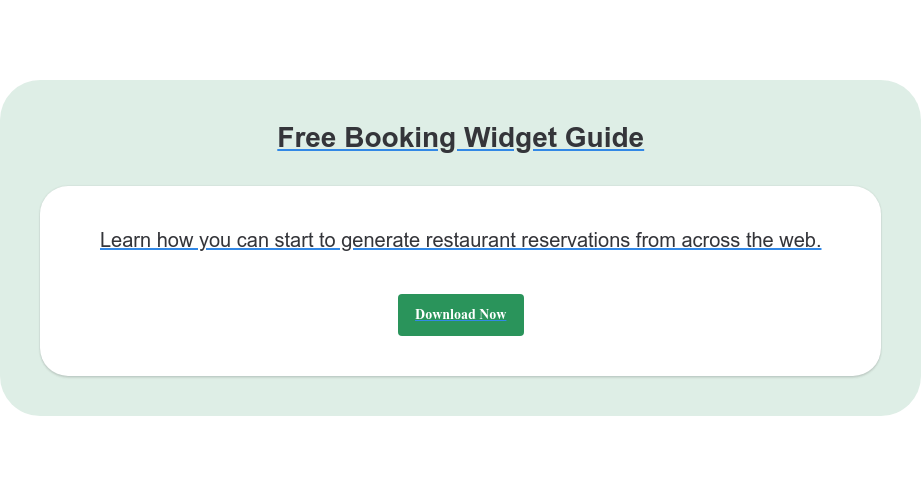
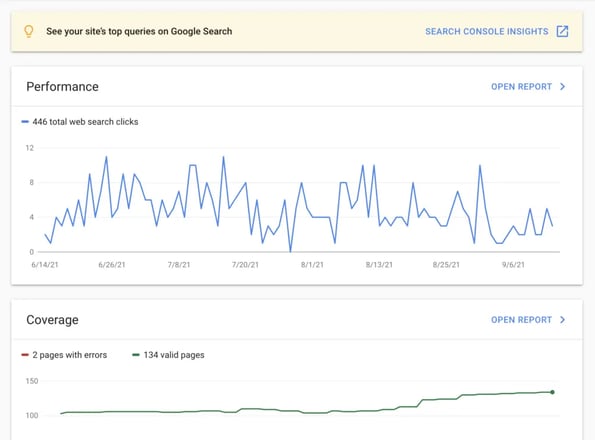
%20(1)-1.webp?width=314&height=175&name=Eat%20(45)%20(1)-1.webp)
%20(1).webp?width=314&height=175&name=Eat%20(53)%20(1).webp)
.webp?width=314&height=175&name=image19%20(1).webp)
%20(1).webp?width=314&height=175&name=Eat%20(66)%20(1).webp)


.webp?width=144&height=72&name=Eat%20App%20Logo%20(3).webp)